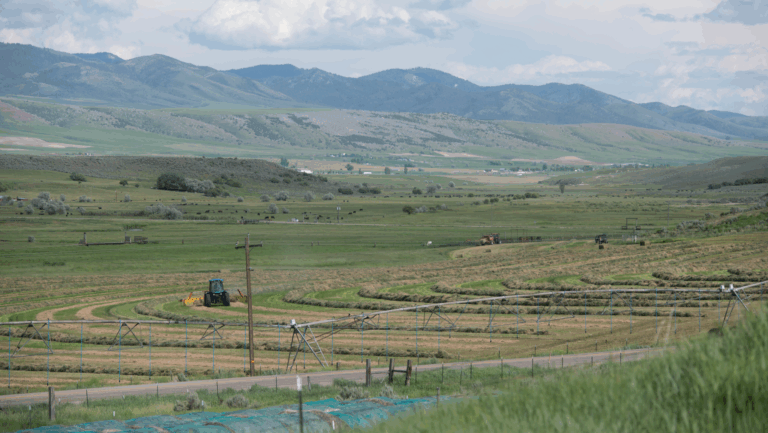How to Cut Costs with Smart Farming Technology
Smart farming technology lets you do more with less.
Is a lack of accessible labor limiting your farm’s productivity or changing the strategy behind your operation? A 2020 report from the Department of Agriculture showed that more farmers are selecting less labor-intensive crops, investing in labor-saving technology, and developing strategies to increase productivity.
“The three problems, since I was a lad, have been labor, water, and food safety,” said Walt Duflock, vice president of innovation at Western Growers. Today, farmers are shuffling between these three priorities with less resources, more demand, and growing climate concerns.
Strategic investment in smart farming technology is helping American farmers become more productive and less reliant on labor, but how do you decide what type of technological investment will benefit your operation the most?
In this article, we’ll outline four key benefits of smart farm technology and share how some farmers are already using it to enhance their operation.
1. Improved Resource and Labor Management
In the mushroom industry, $200MM worth of mushrooms are wasted every year due to a 20 percent labor gap. Like so many other operators, mushroom farmers have turned to an automated picker to fill in the gap.
Smart farm technology like automated pickers is empowering farmers with improved labor management and higher yields. For mushroom farmers, they’ve seen a 10 percent yield improvement. The technology also allows crops to be picked at exactly the right time, which minimizes crop loss.
Although automated picking is becoming increasingly popular, the technology isn’t universal for every crop. For some small operations, the cost of a picker may be too prohibitive. The choice between taking out a loan to finance the equipment or forgo it can make a big impact on your farm labor needs.
Try AgAmerica’s farm loan calculator to estimate the cost of farm loan payments to help you decide which option will save your operation more money in the long run.
2. Precision Farming
There are hundreds of use cases for precision farming technology, but cattle farmers in Arizona have been using it to tame their rapidly growing enemy—the pear cactus. The cactus replaces grasses that would otherwise be used for grazing, spreading 30 percent annually. Luckily, it can be controlled by herbicides, but aerial application is imprecise. Farmers are forced to spray more herbicide than is necessary to kill the cactus.
Enter smart farming technology. A new digital tool uses a combination of sophisticated imagery, weather data, and GIS technology to determine where and when herbicide would be most effective. Thanks to this precise application, farmers can reclaim one pound of forage-quality grass for every pound of cactus removed. Plus, the application is designed to protect pasture legumes, like white clover, while targeting the weeds.
3. Energy Conservation and Sustainable Farming
“Wireless remote monitoring and control systems enable farmers to gain better control and visibility over the operations of their irrigation systems, and to make better decisions regarding water, chemical, and electric usage,” said Sandro Esposito, vice president of SignalFire Wireless Telemetry.
Precision farming and resource management empower farmers to lower their utility bills and ultimately help the planet by using less water, less fuel, and less electricity.
4. More Informed Financial Decisions
By 2050, the amount of data points collected on farms is predicted to go from 190,000 to 4.1MM. The sheer amount of data collected by farm equipment, drone imagery, and crop analytics can’t be processed by a human. It will need to be processed by artificial intelligence (AI).
With the help of AI, farmers will be able to more accurately predict crop yields and estimate their financial position. This leads to better balance sheet management and stronger valuation of land and crops.
How To Invest In New Technology
Farm technology can be expensive. Operators are rarely able to make a cash purchase when investing in new equipment. For that reason, many of them choose to finance their new equipment. Generally, farmers have two options when financing farm technology: leasing farm equipment and infrastructure or taking out a short-term farm loan.
Farm Equipment and Infrastructure Leasing
There are several pros and cons of farm equipment leasing. Leasing provides farmers with optionality, depreciation tolerance, better balance sheet management, and a reduced capital requirement.
However, leasing may not be a good long-term solution. Although short-term costs are low, it may become more expensive than buying over an extended period of time. It’s important to understand how long you plan to use the new equipment and whether you expect to upgrade within the next decade.
Short Term Farm Loans
Short-term farm loans offer farmers ownership of their new technology, opening them up to make some money in the future if they choose to sell it secondhand. Using land as collateral also provides a much lower rate than traditional leasing or technology loans. However, many farmers are uncomfortable using land as collateral against equipment, so this option may be best for very large technology investments.
AgAmerica Can Help You Invest in Technology
If you’re looking to invest in new farm technology, but you need funding, AgAmerica can help. We work with farmers every day to help them build better operations while minimizing debt. Our flexible loan options allow us to pivot with your needs—making sure your financing caters to you and not the other way around. We’ll work closely with you to design a custom loan solution that is best for your operation. Reach out to an expert or learn more about our leasing and short-term loan options today.






